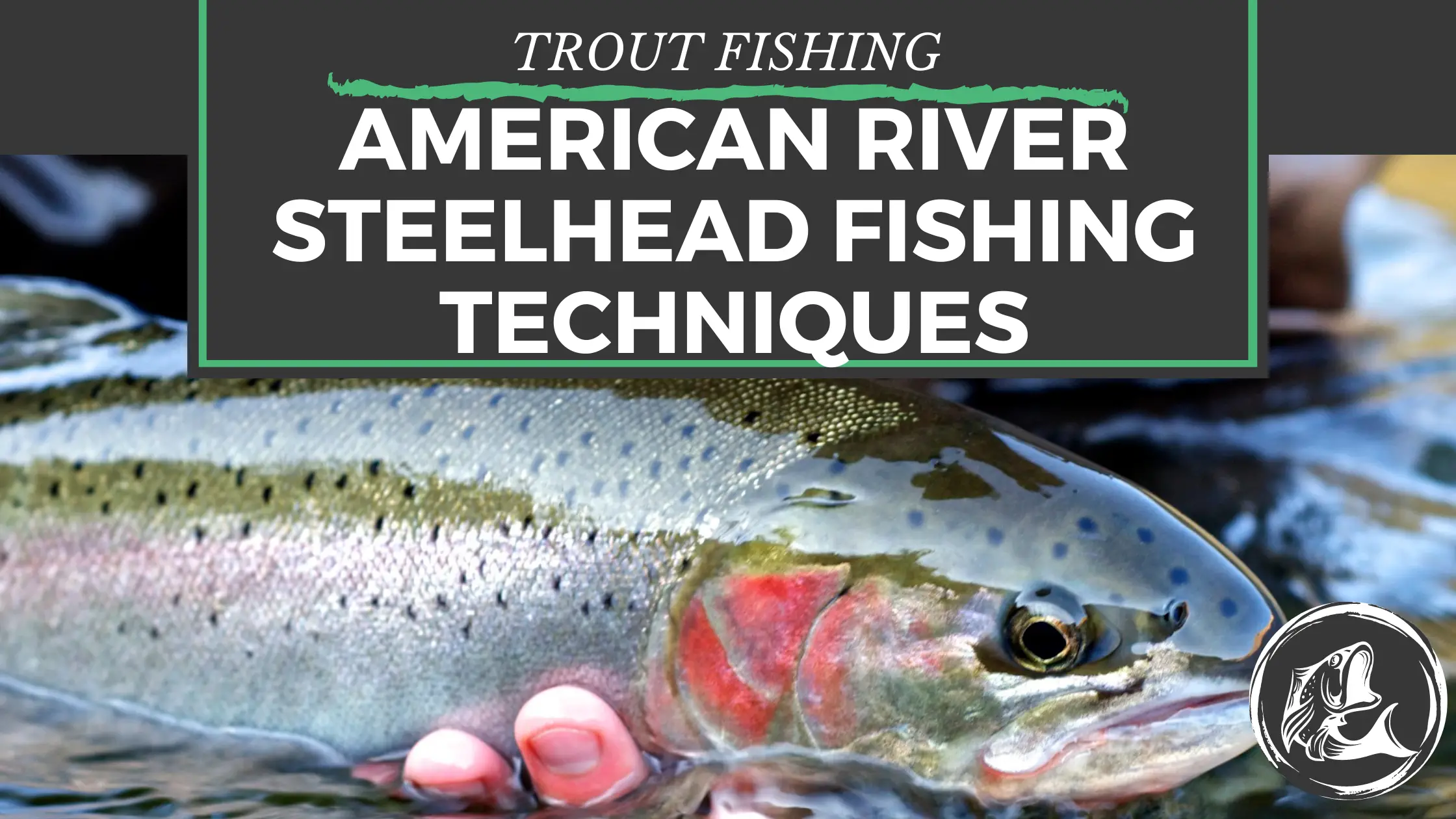American River Steelhead Fishing Techniques
Due to its relatively large size, the American River Steelhead is among the most sought-after game fish in Western North America. Therefore, if you’re looking for a species based on its fighting prowess, steelhead should be at the top of your list. These acrobatic trout are bold and full of energy, which can wear you out after a long day of fishing.
Despite being the most sought-after game fish, Steelhead fishing demands a high skill level. You should know the proper equipment, time of year, location, method, and more.
So, to guide you for your next excursion, this article will go over all of the steelhead fishing advice you’ll need to know to be a skilled steelhead angler. Keep on reading!
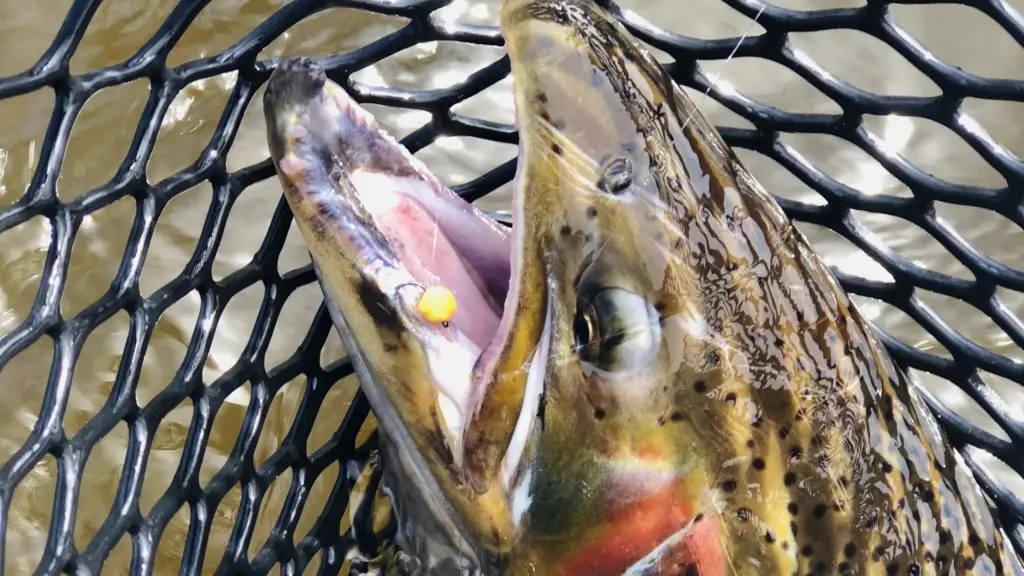
How do you catch steelhead on the American River?
There are two popular ways to catch a steelhead regardless of the gear used: fly fishing and bait fishing.
1. Fly Fishing
Fly fishing is a method of angling used to entice strikes from fish that feed instinctively on various insects, such as steelhead. Because standard fishing gear is typically unsuitable for presenting ultra-lightweight lures, fly fishing gives anglers the best technique in replicating bait of this kind.
This method seeks to capitalize on game fish’s natural predatory instinct. Steelheads would swoop down on the food and hook themselves on the lure.
2. Bait Fishing
Any substance used to lure and catch fish, such as on the end of a fishing hook or within a fish trap, is called Bait Fishing. The bait comes in three varieties: live, dead, and artificial baits.
Live Bait
In almost every case, the most effective bait is a live one. Nothing beats the action and aroma of a live piece of bait in every steelhead’s mouth. Nonetheless, it should necessitate clean, oxygen-rich water to be effective.
Dead Bait
As the name implies, Dead baiting utilizes a dead fish as a hook bait. Thus, you don’t have to keep it alive when it comes to convenience, which is especially helpful if you’re on the go.
Fresh-cut bait also leaves a strong scent trail. It is, in fact, the most effective choice for scent-based hunts in muddy waters.
Artificial Bait
There are many advantages to using artificial bait instead of a real one. It is stress-free and very convenient to use. Jigs, spinners, plugs, and other tools fall into this category.
What’s the best way to fish for steelhead on the American River?
To catch steelhead in the American River, you’ll need to be mindful of your quarry. As a result, it’s critical to understand the relative priorities of the various species. After reproduction, steelheads prioritize food, concealment, and depth. So the best way to catch a steelhead is by considering the priorities of the fish.
Trace Their Food (Food)
Steelheads rely on salmon eggs as their primary energy source as they travel through rivers. Thus, salmon’s eggs are deposited in streams or shallow waters during spawning. Most of the time, these eggs become a buffet of food for hungry steelhead as they flow down the river.
To find and catch trout, it’s important to look for and fish the areas downstream where trout food is deposited.
Locate its Shelter (Concealment and Depth)
Steelheads seek out the deepest water they can locate for shelter. While they prefer deep pools when not feeding or traveling upstream, they are not necessarily the ideal site to catch them.
Fallen or overhanging trees, undercut banks, massive rocks that produce an eddy downstream, turbulent rifles, and bridges are suitable places to seek steelheads.
What’s the best bait for steelhead in the American River?
Baits are everything when it comes to angling, and there is a wide range of alternatives available. Nonetheless, It’s important to use the finest bait possible when dealing with an intelligent fish like steelhead.
The following are some of the top steelhead fishing baits:
Salmon Eggs
Roe, or fish eggs, are steelhead’s primary food source making it the go-to bait of anglers. Thus, drifting the egg would catch the steelhead’s attention faster than any other bait.
Artificial Eggs
Real Salmon eggs are hard to come by. Nonetheless, artificial eggs are a better alternative. Artificial eggs have become quite popular to attract steelhead due to their versatility; they can be scented to attract fish or soaked in liquid krill. More significantly, this bait is reusable.
Spin and Glo
Steelhead fishing using Spin-N-Glo is a good alternative to roe. They’ve been engineered to spin even in the tiniest current, which helps draw the fish’s attention. More importantly, the floating bait can effortlessly reach the steelhead’s feeding areas.
Pink Worms
Surprisingly, fake pink worms seem to be the most effective steelhead fishing bait. Pink worms, often regarded solely as a bass fishing lure or bait, have gained a strong footing in the steelhead fishing worm. They are inexpensive, easy to use and store, and won’t die or muck up your tackle bag as genuine worms or nightcrawlers may.
Spoons
Using flashy spoons is also a viable option. Steelheads can be both enticed and irritated by the bright design and colors, which will provoke them to bite.
What are the best lures to catch steelhead on the American River?
Before recommending the best lures in the market, it’s important to note that lure relies on several things. One of which is the type of fish you wish to capture. Here are some general guidelines for choosing the appropriate lures for each situation:
Color
The colors of the lures should be chosen according to the weather and water conditions. “Bright day, light colors; gloomy day, dark hues” is the usual guideline for lure color.
Light-colored lures that replicate natural patterns on bright, sunny days are used in clear water conditions. On the other hand, darker lures and non-natural hues are best used in musky, unclean water conditions.
Size
The goal is to mimic the prey of the fish you’re catching as closely as possible. Anglers that hunt small prey, for example, are more inclined to avoid huge lures.
Weight
Your prey’s diet and the water’s quality are both of great interest to you. This will determine the weight of your lure. For example, if the current is high or on a windy day, using heavier lures would be more optimal. Lightweight ones are better for calmer circumstances.
Best Lure Options
Once you’ve figured out what to look for in a fishing lure, there are a variety of typical options:
Spinner Blades
Small oval-shaped spinner blades, usually constructed of thin metal, are one of the lure’s distinguishing characteristics. This lure’s movement, which mimics that of a propeller when used in water, attracts steelheads. Depending on your fishing needs, various spinner bait colors, sizes, and weights are available.
Kwikfish
The Kwikfish lure has been one of the most prolific and best lures for steelhead in all sorts of water conditions, especially in cold water seasons. The motion and ability to move it gently through the water attract fish.
Additionally, this bait has a wild back and forth broad wobbling movement that drives fish crazy. Both aggressive and neutral fish will smash this lure when it’s wobbling in their face.
Spoon
Despite being one of the oldest, it is still one of the most reliable fishing equipment. The wobbling of this bait as it sinks through the water produces the image of a severed fish, which could attract several species.
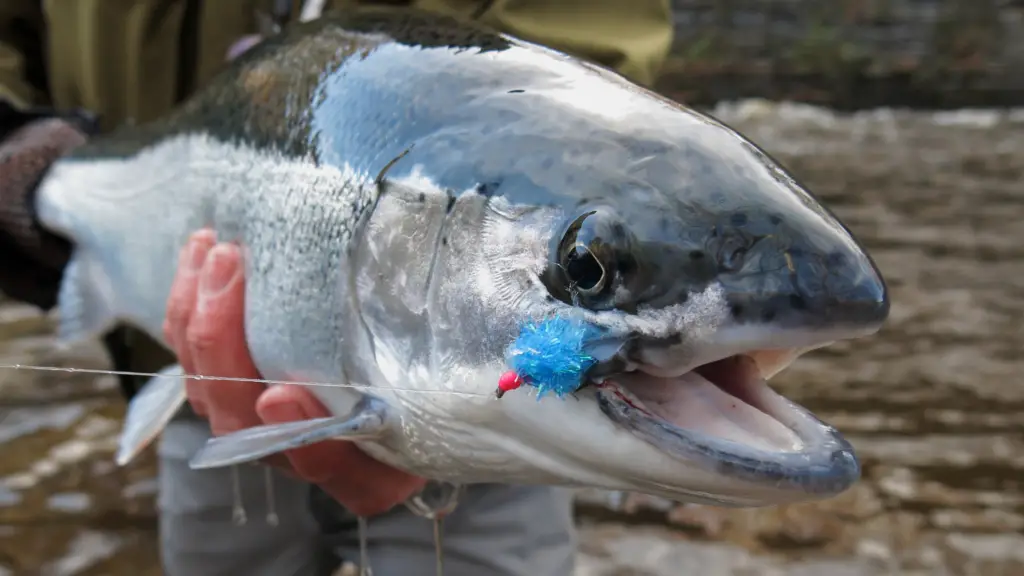
Best techniques for Bank Fishing for steelhead on the American River
As any expert steelhead angler can tell you, steelheads aren’t hard to catch. Nonetheless, if you’ve ever tried to catch steelhead and been hosed or outfished, you might wonder what went wrong. This is especially true while bank fishing, where it’s harder to “go with the flow.”
Remember that the bait, drift, strike, hookset, and presentation play a role in your ultimate success when fishing from the bank. Thus, below are some techniques when bank fishing for steelheads in American Rivers:
Plunking
Plunking refers to casting into a running river and allowing a sinker to retain your bait near the bottom, presumably in an upstream fish movement path. The bait of choice would be cured salmon eggs.
If you are low in the system, fish the incoming tide from the bank. The incoming tide would provide a stronger current, driving the fish closer to shore to avoid the current. When the current is strong, you can use Kwikies (Kwik Fish), spinners, and wobblers.
Float Fishing
Bobber/Float fishing is another option. A bobber holds your bait (eggs, jig, etc.) slightly above the bottom (or at any depth for suspended fish). To do this, adjust the bobber height on the line from the bait until you locate the correct depth of water for the drift.
After that, you can cast further than flipping and then let your line payout on the lower end of your drift to cover more water (if conditions allow). This form of fishing requires a straight line to the bobber, so you may need to “meld” your line to remove slack and keep side or current pull off.
Casting Lures
Casting lures include spoons, spinners, plugs, and roe with varying retrieval speeds. Methods vary depending on water speed, depth, and target fish. To do this, you need to cast out to your target area and reel it back in, letting the lure swing downstream with the flow.
Casting Eggs
Sinker weight is more important than water flow when casting/drifting eggs. You want enough weight to get the lure down without dragging it to the bottom. Thus, the best season to use this technique is during fall/winter when the water flow increases.
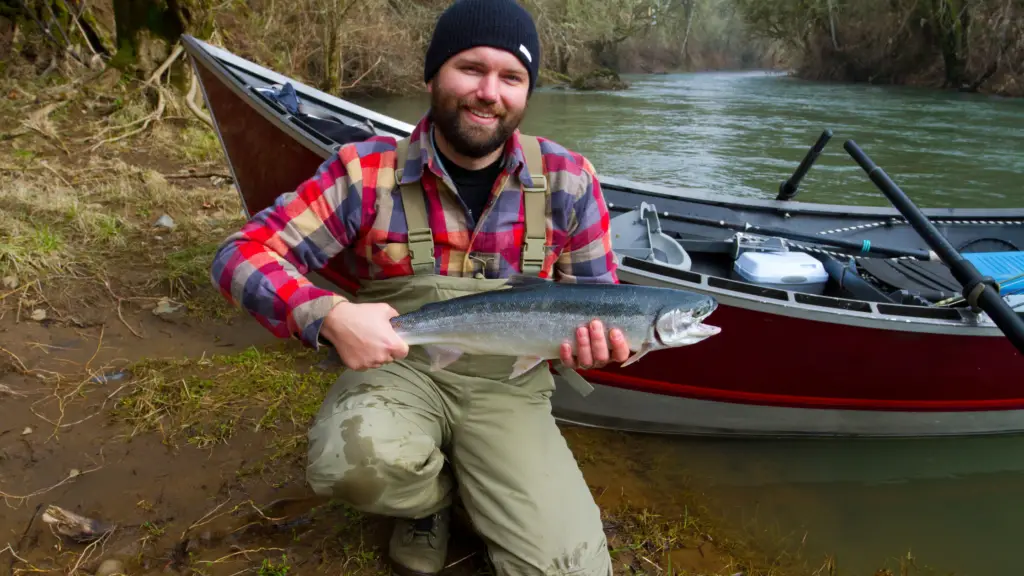
Best techniques for Boat Fishing for steelhead on the American River
Long-distance cruising offers a variety of enjoyable pastimes, one of which is boat fishing. Thus, there are now as many strategies, and ways for steelhead fishing as there were before, and below are some of them:
Drift Fishing
Drift-fishing is a staple of bank fishing, but it’s also dangerous for boaters. To do this, you can look for a possible steelhead holding area. Then, anchor the boat or pull it close enough to the bank for the anglers to drift fish.
This fishing approach commonly uses an 8-1/2-foot rod and can be done using a baitcasting or spinning reel.
Side Drifting
Side-drifting is one of the most effective steelhead techniques. You position your gear alongside the boat for a more natural look through this technique.
Additionally, you can use 7 1/2-9 1/2 foot rods and spinning reels for this potentially lethal method. But whichever rod and reel you use, make sure everyone on board uses the same.
Pulling Plugs
Pulling Plugs, also known as Back Trolling, involves putting baits (Hotshots, Tadpollies, Kwikfish, Flatfish, or bait diver) evenly apart in front of the boat. All while rolling down the river at half speed.
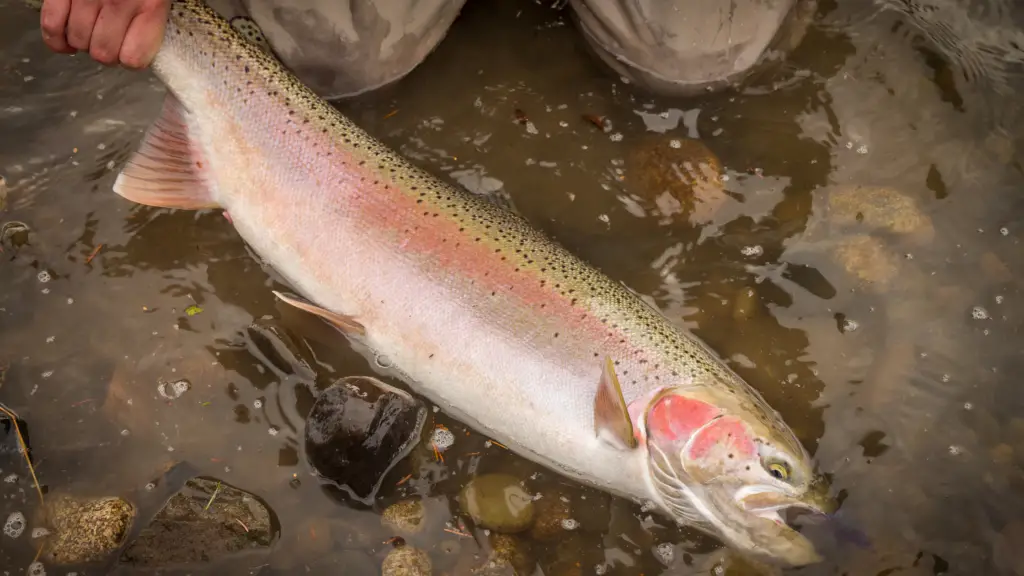
More than Just the Fishing Techniques
Catching steelheads is more than just learning about the best fishing techniques. It also requires a lot of patience and constant adaptations to external environmental changes.
Ultimately, none of these approaches, presentations, or equipment is 100% effective, so you must experiment to determine what works best for you.
Hopefully, this article has given you some new information that you can use to catch one of the American River’s biggest and fiercest fighting fish.

